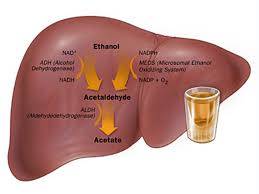Alcoholic liver disease is a condition caused by excessive alcohol consumption. Here are 20 causes, signs and symptoms, effects, and solutions related to alcoholic liver disease:
**Causes:**
1. Excessive and chronic alcohol consumption.
2. Genetic factors that affect alcohol metabolism.
3. Frequency of drinking.
4. Duration of heavy drinking.
5. Gender (women are more susceptible).
6. Underlying liver conditions.
7. Malnutrition and poor diet.
8. Co-occurring liver infections (e.g., hepatitis C).
9. Amount of alcohol consumed per day.
10. Concurrent drug use.
11. Age (older individuals are more vulnerable).
12. Drinking patterns (binge drinking).
13. Personal tolerance to alcohol.
14. Ethnicity (certain populations are more susceptible).
15. Drinking on an empty stomach.
16. Drinking in the presence of liver disease.
17. Previous episodes of alcoholic liver disease.
18. Excessive use of alcohol in medications.
19. Stress and mental health factors.
20. Smoking, which can exacerbate the effects of alcohol.
**Signs and Symptoms:**
1. Jaundice (yellowing of the skin and eyes).
2. Fatigue and weakness.
3. Loss of appetite and weight loss.
4. Abdominal pain and discomfort.
5. Swelling in the abdomen (ascites).
6. Nausea and vomiting.
7. Dark urine.
8. Pale-colored stools.
9. Enlarged liver and spleen.
10. Itchy skin (pruritus).
11. Spider-like blood vessels on the skin (spider angiomas).
12. Enlarged breasts in men (gynecomastia).
13. Cognitive changes (hepatic encephalopathy).
14. Muscle wasting and weakness.
15. Easy bruising and bleeding.
16. Fluid retention in the ankles.
17. High blood pressure.
18. Increased susceptibility to infections.
19. Changes in mental health, including depression and anxiety.
20. Coagulation problems, leading to bleeding disorders.
**Effects:**
1. Alcoholic fatty liver.
2. Alcoholic hepatitis (inflammation of the liver).
3. Fibrosis (scarring) of the liver.
4. Cirrhosis in advanced cases.
5. Increased risk of liver cancer (hepatocellular carcinoma).
6. Metabolic complications, including diabetes.
7. Cardiovascular disease.
8. Pancreatitis (inflammation of the pancreas).
9. High blood pressure.
10. Kidney disease.
11. Sleep disturbances and sleep disorders.
12. Hormonal imbalances.
13. Sexual dysfunction.
14. Mental health issues, including depression and anxiety.
15. Gastrointestinal problems.
16. Increased risk of accidents and injuries.
17. Reduced quality of life.
18. Social and relationship problems.
19. Increased healthcare costs.
20. Increased risk of premature death.
**Solutions:**
1. Abstaining from alcohol.
2. Seeking support through therapy and counseling.
3. Joining support groups for individuals with alcohol use disorder.
4. Medications to manage alcohol cravings and dependence.
5. Nutritional support to address malnutrition.
6. Liver transplantation in severe cases.
7. Regular medical monitoring and follow-up.
8. Treating co-occurring mental health issues.
9. Weight loss and management.
10. Smoking cessation.
11. Managing other risk factors, like high blood pressure and diabetes.
12. Hepatitis A and B vaccinations.
13. Support from family and friends.
14. Cognitive-behavioral therapy to address drinking behaviors.
15. Stress management techniques.
16. Avoiding exposure to environmental toxins.
17. Public health initiatives to promote awareness and prevention.
18. Educating the public about the risks of excessive alcohol consumption.
19. Early intervention for alcohol use disorder.
20. Legal regulations and policies to reduce alcohol accessibility and marketing.
Alcoholic liver disease can be prevented and managed through lifestyle changes, medical treatment, and social support. If you or someone you know is struggling with alcohol addiction, it's important to seek help from healthcare professionals and support groups.


